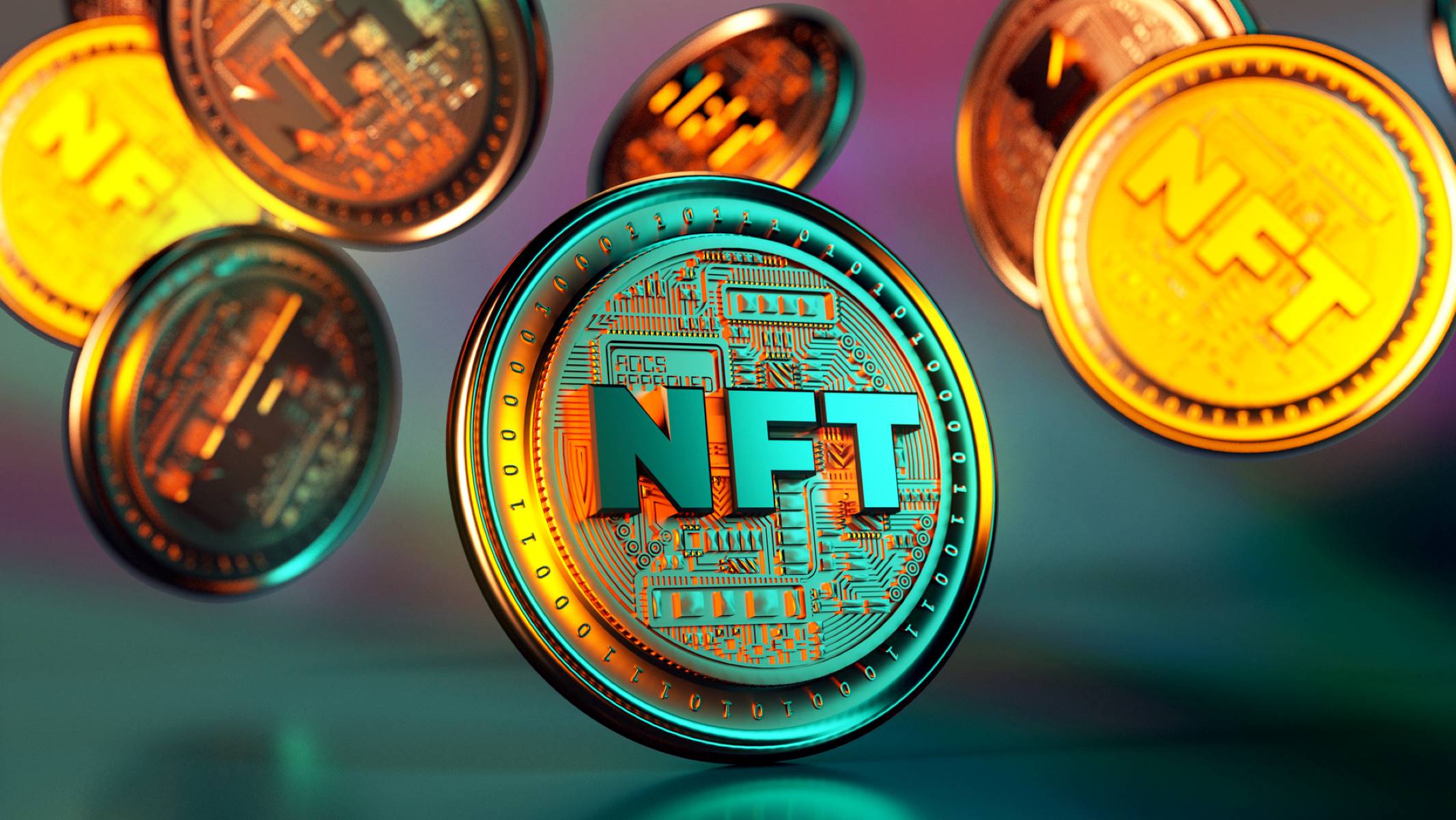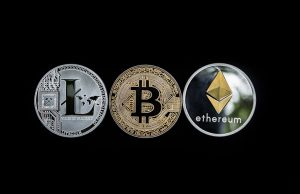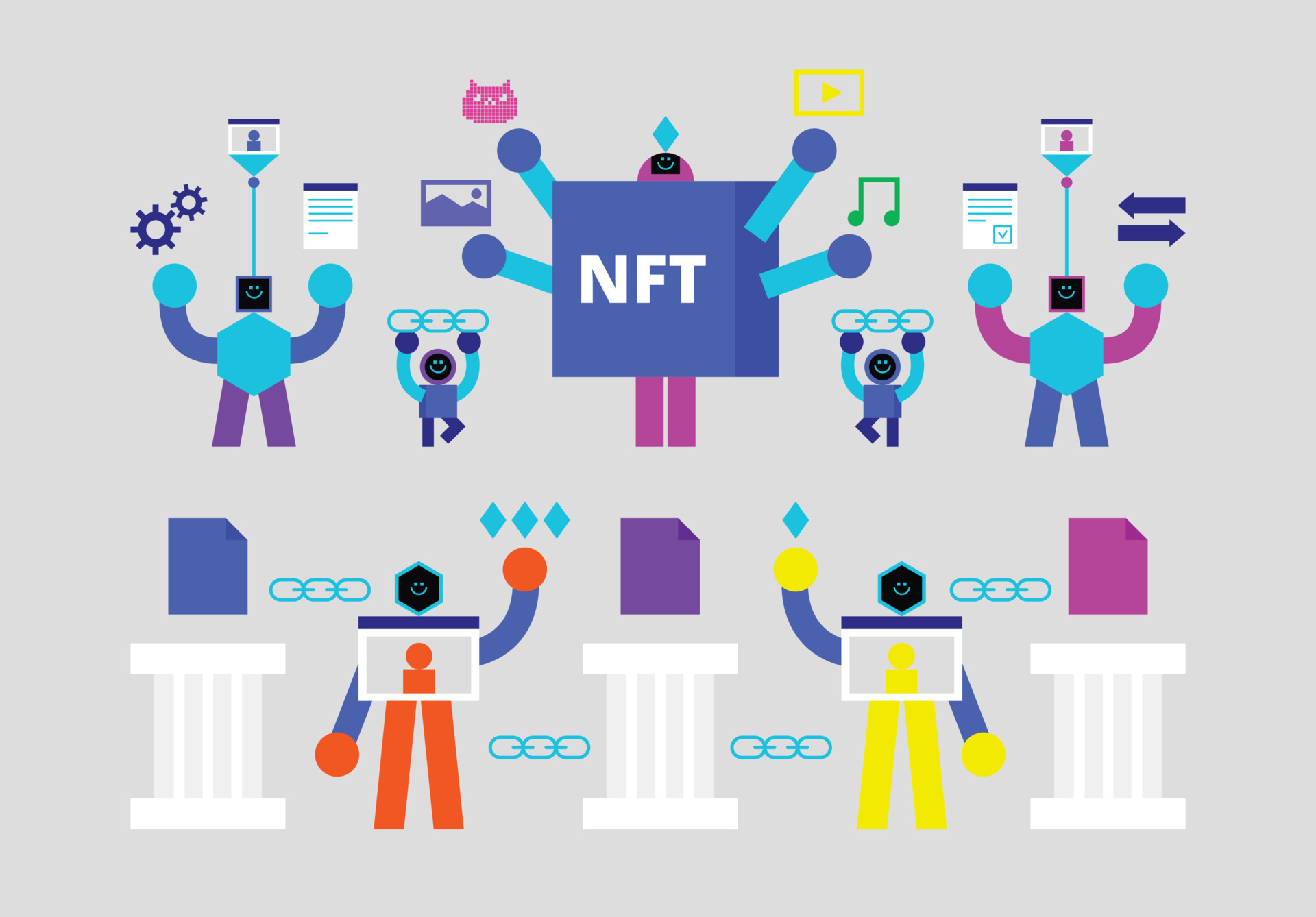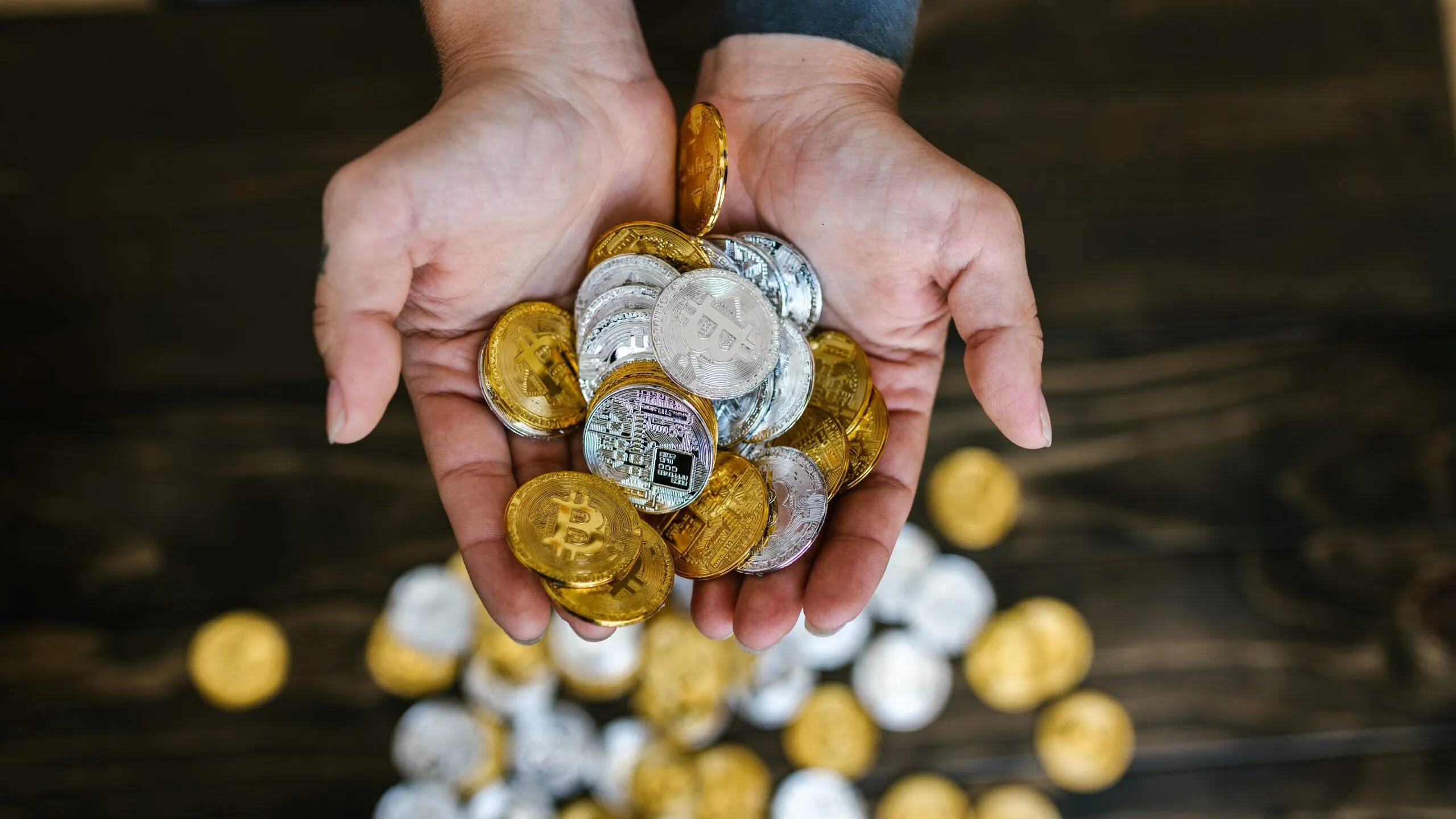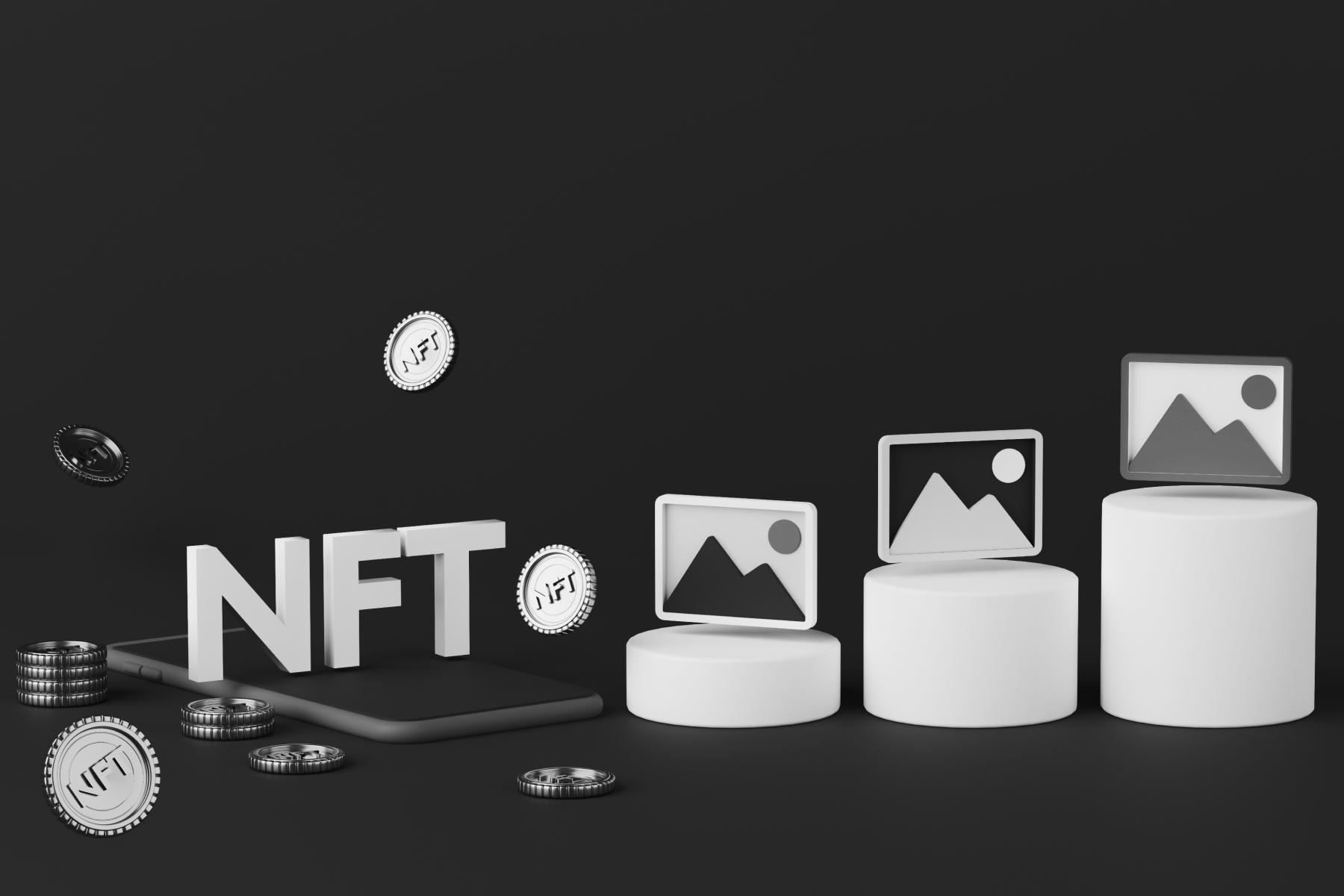Introduction
The world of cryptocurrency has brought about a new phenomenon that is captivating the attention of people from all walks of life – Crypto NFTs. Non-fungible tokens (NFTs) have taken the digital world by storm, offering a unique way to buy, sell, and trade digital assets. From artwork and trading cards to virtual real estate and collectibles, these digital tokens represent ownership of a specific item or piece of content.
However, what is it about Crypto NFTs that has so many people falling head over heels for them? In this article, we will delve into the reasons behind the immense popularity and fascination that Crypto NFTs have garnered.
From the outside looking in, the concept of digital ownership may seem strange. After all, how can one truly own something that exists solely in the digital realm? But therein lies the magic of NFTs – the ability to claim ownership of a unique asset that can be bought, sold, and showcased to the world.
The allure of Crypto NFTs lies in their ability to provide a sense of ownership and rarity. Owning a digital artwork or collectible through an NFT grants individuals the opportunity to be a part of an exclusive group – to possess something that others may not have. This desire for ownership and exclusivity is ingrained in human nature, driving people to seek out and invest in these novel digital assets.
Another key factor contributing to the popularity of Crypto NFTs is the potential for high returns. While the market for NFTs is relatively new and volatile, stories of individuals making substantial profits from buying and selling NFTs have captured the attention of many. The dream of striking it rich with a well-timed NFT investment has fueled the enthusiasm and interest surrounding these digital tokens.
Moreover, the endorsement and promotion of Crypto NFTs by celebrities and influencers have played a significant role in driving the hype. As influential figures showcase their ownership of NFTs or even launch their NFT collections, their followers and fans are enticed to jump on the bandwagon. The celebrity association adds a sense of legitimacy and attractiveness to the world of NFTs, further enticing individuals to explore and invest in these digital assets.
What are Crypto NFTs?
Crypto NFTs, or Non-Fungible Tokens, are unique digital assets that are created and stored on a blockchain. Unlike cryptocurrencies such as Bitcoin or Ethereum, which are fungible and can be exchanged on a one-to-one basis, NFTs are indivisible and represent a specific item or piece of content.
Each NFT is assigned a unique identifier, making it distinct and verifiable on the blockchain. This digital certificate of ownership allows individuals to buy, sell, and trade these assets in a secure and transparent manner.
What sets NFTs apart from traditional digital files is their ability to prove authenticity and scarcity. The blockchain technology that underlies NFTs ensures that each token is one-of-a-kind and cannot be replicated or counterfeited. This technology guarantees the trustworthiness and integrity of the digital asset.
One of the primary use cases of Crypto NFTs is in the world of digital art. Artists can create unique digital artworks and sell them as NFTs, allowing collectors to own a digital copy of the artwork that is verifiably authentic and scarce. The ownership of the NFT grants the buyer certain exclusive rights, such as displaying the artwork in virtual galleries or reselling it on NFT marketplaces.
Beyond digital art, NFTs have expanded into various other realms, including virtual reality, gaming, virtual real estate, music, and even virtual fashion. The versatility of NFTs has opened up new avenues for creators and collectors alike to explore and engage with the digital world.
While NFTs are primarily associated with digital assets, they can also represent real-world assets through the concept of tokenization. Tokenization involves converting physical assets, such as real estate or luxury goods, into digital tokens that can be bought, sold, or traded on the blockchain. This process allows for fractional ownership and increased liquidity of traditionally illiquid assets.
It’s important to note that the value of NFTs is largely driven by market demand. The uniqueness and perceived value of the digital asset determine its worth. Collectors and enthusiasts are willing to pay a premium for NFTs that hold cultural significance, come from esteemed creators, or are part of a limited edition collection.
In summary, Crypto NFTs are non-fungible tokens that represent unique digital assets on the blockchain. They provide proof of ownership, authenticity, and scarcity in the digital realm, offering a new paradigm of collecting, trading, and showcasing digital items.
Why are People Falling for Crypto NFTs?
The rising popularity of Crypto NFTs can be attributed to several key factors that have captivated individuals and enticed them to participate in this digital phenomenon.
Firstly, the allure of ownership and rarity plays a significant role. NFTs provide a unique opportunity for individuals to claim ownership of exclusive digital assets. The idea of possessing something that is one-of-a-kind or part of a limited edition collection taps into our innate desire for uniqueness and exclusivity. People are drawn to the idea of owning a digital artwork or collectible that may not be accessible to everyone, adding a sense of pride and status to their virtual possessions.
Furthermore, the potential for high returns has been a driving force behind the growing interest in Crypto NFTs. Stories of individuals who have made significant profits through buying and selling NFTs have fueled the belief that these digital assets can be lucrative investments. The possibility of striking it rich by owning a rare or highly sought-after NFT has attracted both seasoned investors and newcomers to the market, eager to capitalize on the growing trend.
Celebrity endorsements and influencer hype have played a significant role in amplifying the appeal of Crypto NFTs. When influential figures in the entertainment, sports, or art world publicly promote or participate in NFTs, it generates buzz and piques the interest of their followers and fans. The association with popular personalities adds credibility and allure to the world of NFTs, convincing many to delve into this new digital frontier.
Fear of missing out (FOMO) is another psychological factor driving the fascination with Crypto NFTs. As people witness others profiting or gaining recognition from their NFT investments, a fear of missing out on similar opportunities arises. The fear of being left behind and not capitalizing on the potential gains fuels the desire to participate and invest in NFTs, even if it means taking risks or diving into a relatively new and volatile market.
The role of social media cannot be underestimated in the growing popularity of Crypto NFTs. Platforms like Twitter, Instagram, and TikTok have become hotbeds of NFT-related discussions, showcasing successful sales, new releases, and market trends. The constant exposure to NFT-related content on these platforms builds curiosity and fosters a sense of community among NFT enthusiasts. Social media platforms have become powerful marketing and communication tools, fueling the hype and excitement surrounding these digital assets.
Emotional attachments to digital collectibles have also contributed to the appeal of Crypto NFTs. Just as people form attachments to physical objects like family heirlooms or sentimental items, the digital realm has its own way of evoking emotions. Collecting NFTs allows individuals to build a curated collection of digital assets that hold personal significance or represent a particular interest or passion. These emotional attachments amplify the desire to own and showcase these unique digital items.
Lastly, impulsive buying behavior is prevalent in the world of Crypto NFTs. The ease and accessibility of purchasing NFTs, often through a few clicks on an online marketplace, unconsciously encourage impulsive decision-making. The fear of missing out, combined with the allure of ownership and the promise of potential high returns, can lead individuals to make impulsive buying decisions without thoroughly researching or evaluating the long-term value of the NFT.
In summary, people are falling for Crypto NFTs due to the allure of ownership and rarity, the potential for high returns, celebrity endorsements and influencer hype, fear of missing out, the influence of social media, emotional attachments to digital collectibles, and impulsive buying behavior. These factors have converged to create a perfect storm of fascination and interest in the realm of Crypto NFTs.
The Attraction of Ownership and Rarity
One of the primary reasons why people are drawn to Crypto NFTs is the appeal of ownership and rarity. By owning a non-fungible token, individuals gain a sense of digital ownership over a unique asset that sets them apart from others.
The concept of owning a digital item may seem abstract to some, but NFTs provide a tangible representation of ownership in the digital realm. Unlike traditional digital files that can easily be replicated and shared, owning an NFT provides proof of authenticity and a verifiable record of ownership on the blockchain. This factor alone adds value and exclusivity to the digital asset.
Furthermore, the rarity factor associated with NFTs contributes to their appeal. Each NFT is distinct and one-of-a-kind, making it impossible to replicate or counterfeit. The unique identifier assigned to each NFT ensures that no two tokens are the same, creating a limited supply that increases the perception of value.
Collectors and enthusiasts are often drawn to rare and exclusive items, whether in the physical or digital realm. By owning an NFT that is part of a limited edition series or created by a renowned artist, individuals become part of an exclusive group of owners. This feeling of exclusivity is deeply ingrained in human psychology and drives the desire to possess unique items that others may not have access to.
The rarity factor is enhanced by the concept of scarcity in the world of Crypto NFTs. The scarcity of an NFT can be defined by its limited availability or the unique nature of the digital content it represents. For example, an NFT representing a digital artwork may be limited to a specific number of editions, with each edition being owned by a different individual. This sense of scarcity creates a perception of value and rarity among collectors, increasing the attraction towards owning such NFTs.
Moreover, the concept of ownership extends beyond just having possession of a digital asset. NFTs enable owners to interact with their digital collectibles in various ways. For example, owners can display their NFTs in virtual galleries, showcase them on social media, or even use them in virtual reality environments. This interactive aspect adds depth to the ownership experience and allows individuals to personalize and showcase their digital assets in unique and creative ways.
In summary, the attraction of ownership and rarity drives people to engage with Crypto NFTs. The ability to claim ownership over a unique and rare digital asset provides a sense of value, exclusivity, and personalization. NFTs grant individuals the opportunity to be part of an exclusive group of owners, satisfying the inherent desire for ownership and scarcity.
The Potential for High Returns
One of the key reasons why people are flocking to Crypto NFTs is the potential for high returns on their investments. While the market for NFTs is largely speculative and volatile, there have been numerous success stories of individuals making substantial profits by buying and selling NFTs.
The allure of high returns stems from the fact that the value of NFTs can appreciate dramatically, especially for rare and sought-after digital assets. This potential for price appreciation is fueled by several factors. Firstly, the limited supply and exclusivity of NFTs contribute to their perceived value. When demand exceeds supply, the prices of NFTs can skyrocket, leading to significant returns for early investors.
Additionally, the celebrity endorsements and collaborations with renowned artists or creators can significantly impact the value of NFTs. When high-profile individuals participate in the NFT market, it generates hype and interest, which can drive up prices. The association with established figures adds a level of credibility and desirability to the NFT, making it more attractive to collectors and investors.
The growing acceptance and adoption of NFTs in mainstream culture also contribute to their potential for high returns. As more industries, such as art, music, and sports, embrace NFTs, it expands the potential market and increases demand for these digital assets. The wider the audience, the higher the potential for price appreciation.
Moreover, the speculative nature of NFTs attracts investors who are willing to take risks in the hopes of capitalizing on significant gains. The volatility of the NFT market allows for quick fluctuations in prices, presenting opportunities for traders to buy low and sell high, potentially generating substantial profits in a short period of time.
It’s important to note, however, that investing in NFTs comes with inherent risks. The NFT market can be highly speculative, and prices can be influenced by factors that are beyond an investor’s control. Therefore, conducting thorough research, understanding the market dynamics, and being cautious of potential scams are crucial for those interested in investing in NFTs.
Nevertheless, the potential for high returns is a powerful motivator for individuals who are looking to diversify their investment portfolios or seek alternative opportunities in the digital realm. The allure of making substantial profits from NFT investments has drawn attention from both seasoned investors and newcomers to the market.
In summary, the potential for high returns is a significant driver behind the increasing interest in Crypto NFTs. The limited supply, celebrity endorsement, growing acceptance, and speculative nature of NFTs present an opportunity for investors to capitalize on the appreciation of these digital assets. While investing in NFTs carries risks, the allure of significant profits continues to attract individuals to this emerging market.
Celebrity Endorsements and Influencer Hype
The world of Crypto NFTs has caught the attention of celebrities and influencers, who have played a significant role in fueling its popularity. High-profile endorsements and collaborations with renowned artists and creators have created a sense of legitimacy and excitement surrounding Crypto NFTs.
When celebrities publicly endorse or participate in the NFT market, it generates a significant amount of buzz and interest. Their association with NFTs adds a level of credibility and attractiveness to the digital assets, enticing their fan bases and followers to explore and invest in this emerging space. Additionally, the involvement of celebrities can bring in new audiences who may have been previously unfamiliar with the concept of NFTs.
Celebrities themselves have embraced NFTs by creating and releasing their own collections. This not only allows them to monetize their digital content but also adds an exclusive aspect to their brand. Fans and collectors are enticed to own a unique piece of digital memorabilia associated with their favorite celebrity or artist, resulting in high demand and potentially increased value for these NFTs.
Besides celebrities, influencers in the digital and creative space have played a crucial role in promoting Crypto NFTs. Influencers are individuals with a substantial following on social media platforms, and their opinions and recommendations hold significant sway among their audience. When influencers actively engage with NFTs, showcasing their purchases or offering insights and recommendations, it can create a domino effect, encouraging their followers to explore and invest in NFTs as well.
Influencers also contribute to the hype around specific NFT projects or collections. By generating excitement and a sense of urgency, they create FOMO (fear of missing out) among their followers. This FOMO-driven hype can, in turn, lead to inflated prices and increased demand for certain NFTs, benefiting those who were early to invest or acquire these assets.
It’s important to note that not all celebrity endorsements or influencer promotions of NFTs are created equal. The credibility and impact of these endorsements depend on various factors, such as the authenticity of the celebrity’s interest in NFTs, the alignment of the NFT project with the influencer’s niche, and the level of engagement and interaction with the audience. Genuine endorsements and organic engagement tend to resonate more with the audience, fostering trust and driving meaningful interest in NFTs.
In summary, celebrity endorsements and influencer hype have played a pivotal role in the growing popularity of Crypto NFTs. The association with high-profile individuals adds credibility and attractiveness to NFTs, expanding their reach to new audiences. Celebrities and influencers who actively participate in the NFT space can drive excitement, create FOMO, and generate significant interest in specific NFT projects or collections.
Fear of Missing Out (FOMO)
The Fear of Missing Out, commonly known as FOMO, is a psychological phenomenon that has heavily influenced the growing interest and participation in the Crypto NFT market. FOMO occurs when individuals have a deep sense of anxiety or fear that they might miss out on an opportunity or experience that others are enjoying. In the context of Crypto NFTs, FOMO is a powerful motivator that drives people to invest in these digital assets.
One of the main factors contributing to FOMO in the NFT space is the potential for quick and substantial financial gains. Stories of individuals making significant profits from investing in NFTs have spread rapidly across social media platforms, creating a sense of urgency among potential investors. The fear of missing out on the next big NFT investment or the possibility of making life-changing profits compels individuals to take action without wanting to be left behind.
Furthermore, the highly speculative nature of the Crypto NFT market amplifies the FOMO effect. Prices of NFTs can fluctuate rapidly, with some experiencing massive price increases in a short period of time. Witnessing others reap high returns on their NFT investments can intensify the fear of missing out on such opportunities. The fear of being left out of potential financial gains pushes individuals to invest hastily, often without conducting thorough research or fully understanding the dynamics of the market.
Social media platforms play a significant role in fueling FOMO within the NFT community. Platforms like Twitter, Instagram, and TikTok are filled with posts and discussions about successful NFT investments, exclusive drops, and limited edition releases. The constant exposure to success stories and exclusive opportunities stirs up a sense of urgency and the fear of not being part of the action.
Additionally, the fear of missing out on owning unique and limited edition digital collectibles contributes to FOMO in the NFT market. NFTs represent a form of digital ownership, offering a sense of exclusivity and status to the holders. Seeing others showcase their collections or own rare pieces of digital art can instill a fear of missing out on the chance to possess these unique items and be a part of a select group.
It’s important to approach the Crypto NFT market with a level-headed mindset and to recognize the influence of FOMO. Investing in NFTs should be based on thorough research, understanding the underlying value of the asset, and being aware of the risks involved. Making impulsive decisions driven solely by the fear of missing out can lead to potential losses and disappointment.
In summary, the fear of missing out (FOMO) is a key driving force behind the increasing interest and participation in Crypto NFTs. The fear of missing out on financial gains, unique digital collectibles, and exclusive opportunities plays a significant role in pushing individuals to invest in NFTs hastily. Being aware of the influence of FOMO and approaching NFT investments with a balanced mindset is crucial to make informed decisions in this dynamic and rapidly evolving market.
The Role of Social Media in Fuelling the Hype
Social media platforms have played a pivotal role in the exponential growth and widespread adoption of Crypto NFTs. The power of social media in shaping trends, spreading information, and creating hype has significantly contributed to the fascination and allure surrounding NFTs.
Platforms like Twitter, Instagram, and TikTok have become hubs of NFT-related discussions, where users share their experiences, showcase their NFT collections, and engage in conversations about the latest developments in the market. The constant flow of information and content on social media platforms has created a sense of community and excitement among NFT enthusiasts.
Social media has become a powerful marketing tool in the NFT space, allowing artists, creators, and NFT projects to reach a broader audience. Digital artists can showcase their NFT artwork, gain exposure, and connect directly with potential buyers and collectors. NFT projects can leverage social media platforms to generate buzz, announce upcoming releases, and foster engagement with their community.
The virality of content on social media has greatly contributed to the hype surrounding Crypto NFTs. Moments of success, such as high-profile sales or collaborations, go viral quickly, spreading across platforms and capturing the attention of a vast audience. The amplification of these moments by likes, shares, and comments creates a snowball effect, further fueling the excitement and curiosity around NFTs.
Moreover, influencers and industry experts play a significant role in shaping the NFT narrative on social media. Influencers with substantial followings can shape public opinion, create trends, and drive interest in specific NFT projects or collections. Their endorsements, recommendations, and reviews have the potential to influence the decision-making process of their followers, resulting in increased participation in the NFT market.
Another aspect of social media that contributes to the hype is the sense of exclusivity and belonging that can be generated. Many NFT projects and drops require users to follow specific social media accounts, join Discord communities, or participate in Twitter giveaways to gain access or be part of an exclusive group. This exclusivity creates a sense of privilege and urgency, driving individuals to engage with the project and obtain coveted NFTs.
However, it’s important to critically evaluate the information and content shared on social media. With the rapid growth of the NFT market, there has been an influx of misinformation, scams, and misleading promotions. Engaging with trusted sources, conducting thorough research, and approaching NFT investments with a cautious mindset are crucial to navigate the social media landscape effectively.
In summary, social media platforms have played a pivotal role in fueling the hype and excitement surrounding Crypto NFTs. The ability to share information, showcase digital assets, and connect with a wide audience has allowed NFT enthusiasts, artists, creators, and projects to thrive. However, it’s essential to maintain a critical eye and be cautious of potentially misleading information or scams that may circulate on social media platforms.
Emotional Attachments to Digital Collectibles
One of the intriguing aspects of Crypto NFTs is the formation of emotional attachments to digital collectibles. While the concept of emotional connection to physical objects is well-known, the emergence of digital assets has paved the way for new forms of attachment and sentimental value.
The ability to own and interact with unique digital collectibles has evoked strong emotions and attachments in individuals. For some, the appreciation of digital art or the ownership of a rare virtual item holds personal significance and resonates with their interests, values, or memories.
Emotional attachments to digital collectibles can stem from the aesthetic appeal of the artwork, the story behind the creation, or the connection to the artist. Digital art, in particular, has become a medium for self-expression and communication, allowing artists to convey their ideas, emotions, and experiences. For collectors, these artworks can evoke powerful emotions, resonate with personal experiences, or simply bring joy and inspiration.
The association of NFTs with significant moments, events, or collaborations may also generate emotional attachments. For example, owning an NFT that celebrates a milestone in one’s favorite artist’s career or commemorates a special sporting achievement can create a sense of connection and emotional value. The digital collectibles become tokens of shared experiences or fandom, deepening the attachment to the NFT.
Virtual worlds and gaming have also contributed to emotional attachments to digital collectibles. In immersive virtual environments, individuals can acquire and showcase virtual items, such as clothing, accessories, or virtual real estate. These virtual possessions can hold sentimental value as they represent personal achievements, memories with friends, or the embodiment of one’s virtual identity.
Additionally, with the rise of blockchain technology, ownership of an NFT provides a verifiable and permanent record of authenticity and provenance. This aspect adds a layer of trust and reassurance, further strengthening the emotional attachment to the digital collectible. The knowledge that an NFT represents a unique, scarce, and irreplaceable asset enhances its value and emotional significance.
Furthermore, the ability to display and share digital collectibles on social media platforms contributes to the emotional connection. Individuals can showcase their NFT collections to their followers, friends, and the wider online community, generating a sense of pride and validation. The positive reactions and recognition received from others can reinforce the emotional attachment and perceived value of the digital collectibles.
It’s important to highlight that emotional attachments to digital collectibles are personal and subjective. What holds sentimental value for one person may not resonate with others. The beauty of Crypto NFTs lies in its diverse range of digital assets, catering to various interests and preferences, allowing individuals to find meaning and emotional connection within the digital realm.
In summary, emotional attachments to digital collectibles are an intriguing aspect of the Crypto NFT phenomenon. The aesthetic appeal, personal significance, shared experiences, and the ability to showcase digital assets contribute to the formation of emotional bonds between individuals and their NFTs. These emotional attachments deepen the value and enjoyment derived from owning unique digital collectibles, bringing a new dimension to the concept of ownership and personal expression in the digital age.
Impulsive Buying Behavior
Impulsive buying behavior is prevalent in the world of Crypto NFTs, driven by the allure of ownership, the fear of missing out (FOMO), and the excitement surrounding these digital assets. The ease of access and the fast-paced nature of the NFT market can lead individuals to make impulsive buying decisions without careful consideration or due diligence.
One of the primary factors contributing to impulsive buying behavior in the NFT space is the fear of missing out (FOMO). The fear of missing out on an opportunity to own a unique or rare digital collectible, participate in an exclusive sale, or benefit from potential financial gains can drive individuals to make hasty purchasing decisions. The fear of missing out on potential profits or the chance to be part of a select group can override rational decision-making processes, leading to impulsive buying behavior.
The allure of ownership over unique digital assets is another influential factor behind impulsive buying behavior. Owning a digital artwork, virtual real estate, or a limited edition NFT can provide a sense of pride, status, and exclusivity. The desire to possess these digital collectibles can lead individuals to make impulsive buying decisions without thoroughly evaluating the long-term value or market conditions of the NFT.
The fast-paced nature of the NFT market, with new releases, drops, and limited edition sales happening frequently, can contribute to impulsive buying behavior. The excitement and sense of urgency created by time-limited opportunities or scarce editions can trigger impulsive responses. The fear that an NFT may no longer be available or that its price may increase rapidly can prompt individuals to make quick purchasing decisions without proper research or consideration.
Social media also plays a significant role in driving impulsive buying behavior in the NFT market. The constant exposure to success stories, high-profile endorsements, and the showcasing of valuable or rare NFT collections can create a sense of envy and urgency among individuals. The desire to keep up with trends and the pressure to participate in the NFT market can lead to impulsive buying decisions driven by the fear of missing out on potential gains or the desire for social validation.
Moreover, the ease of access to NFT marketplaces and the instant nature of transactions can contribute to impulsive buying behavior. With just a few clicks, individuals can purchase an NFT without much friction or time for reflection. The lack of a physical presence or tangible product can make it even easier to make impulsive decisions, as there is no physical object to weigh or thoroughly evaluate before making a purchase.
It’s important to exercise caution and practice responsible buying habits in the NFT market. Conducting thorough research, understanding the underlying value of the NFT, and evaluating personal financial circumstances are crucial before making a purchase. Taking the time to consider the long-term implications and potential risks associated with an NFT investment can help prevent impulsive buying decisions and ensure a more informed approach.
In summary, impulsive buying behavior is prevalent in the world of Crypto NFTs, driven by factors such as the fear of missing out, the allure of ownership, the fast-paced nature of the market, social media influence, and the ease of access. Practicing responsible buying habits and taking the time to evaluate the value and long-term potential of an NFT investment is essential to avoid impulsive decisions and make informed choices in the NFT market.
Lack of Understanding and Due Diligence
A significant challenge in the Crypto NFT market is the lack of understanding and due diligence conducted by individuals entering this space. The excitement and hype surrounding NFTs can lead to impulsive buying decisions without properly researching and evaluating the NFT’s value, potential risks, and long-term viability.
One of the primary reasons for this lack of understanding is the novelty and complexity of the NFT market. Blockchain technology, smart contracts, and the intricacies of the NFT ecosystem can be overwhelming for newcomers. Without a solid grasp of these concepts, individuals may struggle to assess the value and potential pitfalls associated with an NFT investment.
Another contributing factor is the fast-paced nature of the market, with new releases, drops, and limited edition sales happening frequently. The pressure to act quickly or risk missing out on an opportunity can deter individuals from taking the time to conduct proper due diligence. This rush to participate without fully understanding the NFT or its underlying value can lead to regrettable investments.
Moreover, the lack of regulation and standardization in the NFT market poses challenges for individuals seeking reliable and accurate information. Scams, counterfeit NFTs, and misleading promotions can deceive those who are not vigilant in their research. Without taking the time to verify the authenticity and reputation of the NFT project or the platform on which it is traded, individuals may fall victim to fraudulent schemes.
Education and awareness are essential in addressing the lack of understanding in the NFT market. Learning about blockchain technology, the mechanics of NFTs, and the associated risks can empower individuals to make informed decisions. Seeking out reputable sources, joining communities of experienced collectors or investors, and engaging in discussions can provide valuable insights and mitigate the risks associated with NFT investments.
Furthermore, conducting due diligence before investing in an NFT is crucial. This includes researching the artist or creator behind the NFT, analyzing the historical performance of their work, and evaluating the demand in the market. Understanding the provenance, scarcity, and potential future value of an NFT can help individuals make better-informed investment decisions.
Engaging with the community is another way to gain insights and knowledge about the NFT market. Participating in forums, attending virtual conferences or webinars, and networking with industry professionals can expand one’s understanding and provide access to valuable information.
In summary, the lack of understanding and due diligence in the Crypto NFT market can lead to uninformed decisions and potential risks for investors. The novelty of the market, the fast-paced nature of NFT releases, and the lack of regulation contribute to this challenge. Education, awareness, and conducting proper due diligence can empower individuals to navigate the NFT market more effectively and make informed investment decisions.
The Dark Side of Crypto NFTs
While Crypto NFTs have gained immense popularity and attention in recent years, it is important to acknowledge and address some of the dark sides and potential risks associated with this emerging market. Understanding these aspects is crucial for investors and enthusiasts to make informed decisions and navigate the NFT space responsibly.
One of the major concerns is the environmental impact of the NFT market. Critics argue that the energy consumption associated with blockchain technology, particularly in the case of proof-of-work blockchains like Ethereum, is significant and contributes to carbon emissions. The process of minting and trading NFTs consumes a substantial amount of energy, raising questions about its long-term sustainability. However, efforts are underway to explore more eco-friendly solutions by utilizing proof-of-stake blockchains and other sustainable alternatives.
Another issue is the lack of regulation and protection for buyers and sellers in the NFT market. Given the decentralized nature of the blockchain, scams, frauds, and counterfeit NFTs are prevalent. Due to the absence of centralized oversight, it can be challenging to identify and hold accountable those involved in fraudulent activities. NFT investors need to exercise caution, conduct thorough research, and be vigilant to mitigate the risks associated with fraudulent schemes.
The volatility and speculative nature of the NFT market pose risks for investors. Prices of NFTs can fluctuate dramatically, and individuals who invest without a clear understanding of the value or market dynamics may experience substantial losses. Lack of liquidity in certain NFT markets and potential difficulties in reselling digital assets can also pose challenges for investors seeking to exit their positions or liquidate their holdings.
In addition, issues of copyright infringement and intellectual property rights have arisen within the NFT space. The ability to tokenize and sell digital assets raises concerns about unauthorized use or distribution of copyrighted content. Artists, creators, and even collectors need to be cautious and ensure that they have the necessary rights to the content they are minting or trading as NFTs.
Furthermore, the elitism and exclusivity associated with some NFT collections may exacerbate existing wealth disparities. The high prices and limited availability of certain NFTs can create barriers for access, excluding those who do not have the financial means to participate. This has led to criticism that the NFT market primarily benefits established artists and wealthy collectors, potentially marginalizing emerging artists and smaller participants.
Privacy is another concern in the NFT space. While blockchain technology ensures transparency and immutability, the public nature of the blockchain means that transactions and ownership of NFTs are visible to anyone. This lack of privacy can raise concerns about data security and potential exposure of personal information.
Overall, while Crypto NFTs offer exciting opportunities, it is vital to be aware of the dark sides and potential risks associated with this market. Looking beyond the hype and addressing concerns related to the environment, regulation, volatility, copyright infringement, exclusivity, privacy, and other ethical considerations will contribute to the responsible growth and sustainable development of the NFT ecosystem.
Conclusion
The world of Crypto NFTs has revolutionized the concept of ownership, creating a digital realm where unique assets can be bought, sold, and showcased. From artwork and virtual real estate to collectibles and music, NFTs have gained immense popularity and fascination among people from various backgrounds.
Several factors contribute to the allure and interest in Crypto NFTs. The attraction of ownership and rarity taps into our innate desire for exclusivity and the opportunity to possess something unique. The potential for high returns drives both seasoned investors and newcomers to explore the market. Celebrity endorsements and influencer hype add credibility and excitement, while the fear of missing out (FOMO) creates a sense of urgency.
Social media platforms play a crucial role in fueling the hype surrounding NFTs. The constant exposure to success stories, promotions, and discussions creates a sense of community and encourages participation. Emotional attachments to digital collectibles deepen the value and enjoyment derived from owning unique assets, while impulsive buying behavior can lead to regrettable decisions driven by FOMO and the desire for ownership.
The NFT market, however, is not without its challenges. Lack of understanding and due diligence can lead to uninformed decisions and potential risks. Environmental concerns, lack of regulation, scams, and counterfeit NFTs pose risks for investors. Market volatility, copyright issues, exclusivity, and privacy concerns also need to be addressed for the responsible growth and sustainable development of the NFT ecosystem.
As the Crypto NFT market continues to evolve, education, research, and cautious participation are vital. Individuals should take the time to understand the underlying technology, evaluate the value of NFTs, and consider the long-term implications of their investments. Engaging with reputable sources, communities, and industry professionals can provide valuable insights and guidance.
Therefore, as we embrace the exciting opportunities that Crypto NFTs offer, we must also remain mindful of the risks, challenges, and ethical considerations associated with this emerging market. By navigating the space responsibly, we can fully appreciate and benefit from the unique experiences and possibilities offered by Crypto NFTs.







